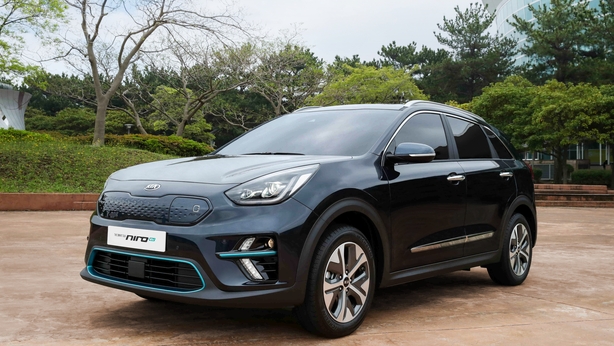With a claimed long-distance range of "up to 450 km" for its upcoming Niro fully electric car, Kia is edging closer to the kind of capability that is needed to get these cars more widely accepted.
Kia already has hybrid and plug-in hybrid versions of its Niro and the all-electric version completes the line-up. The crossover concept has been successful for Kia and the first two versions have already clocked up sales of 200,000 globally, with 65,000 of them in Europe. The final all-electric version is to have its debut at the Paris motor show in September and go on sale by the end of the year. It’s already on sale in Korea.
Kia says a high-capacity 64 kWh lithium-polymer battery pack offers a driving range of "up to 450 kilometres on a single charge, with zero emissions. It says when plugged into a 100 kW fast charger, it takes 54 minutes to recharge the Niro EV’s battery to 80%. Buyers will also be able to specify an optional 39.2 kWh lithium-polymer battery pack, with a range of up to 300 kilometres from a single charge.

The claimed range for the Niro brings it nearer to what think is the range that many mainstream buyers will be comfortable with.
With this kind of range - if it stands up to real-life testing conditions - the Niro edges closer to the kind of range that many believe is needed to convince many mainstream buyers to move to electric. That range is at least 700 km on a single charge, according to some.
A 7.0-inch touchscreen HMI (human-machine interface) is at the centre of the dashboard and has been updated to offer a series of EV-specific features. The new infotainment system enables owners to locate nearby charging points and monitor the level of charge and range remaining from the battery pack. Driving patterns and EV powertrain information can be monitored on the move.
Available active safety systems include a forward collision warning system with collision-avoidance. Cruise Control with intelligent stop and go and Lane Following Assist. Lane Following Assist is an autonomous driving system, which tracks vehicles in front of the car in traffic, and detects road markings to keep the car in its lane motorways. The system controls acceleration, braking and steering according to the behaviour of vehicles in front, using external sensors to maintain a safe distance. It operates between 0 and 130 kph.
It will be some time. however, before we know how much of this technology will be standard on the car when it comes to Ireland.


